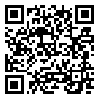Volume 72, Issue 7 (October 2014)
Tehran Univ Med J 2014, 72(7): 423-434 |
Back to browse issues page
Download citation:
BibTeX | RIS | EndNote | Medlars | ProCite | Reference Manager | RefWorks
Send citation to:



BibTeX | RIS | EndNote | Medlars | ProCite | Reference Manager | RefWorks
Send citation to:
Noori Daloii M R, Salmaninejad A, Tabrizi M. Induced pluripotent stem cells in research and therapy of diseases: review article. Tehran Univ Med J 2014; 72 (7) :423-434
URL: http://tumj.tums.ac.ir/article-1-6280-en.html
URL: http://tumj.tums.ac.ir/article-1-6280-en.html
1- Department of Medical Genetics, Faculty of Medicine, Tehran University of Medical Sciences, Tehran, Iran. , nooridaloii@sina.tums.ac.ir
2- Department of Medical Genetics, Faculty of Medicine, Tehran University of Medical Sciences, Tehran, Iran.
2- Department of Medical Genetics, Faculty of Medicine, Tehran University of Medical Sciences, Tehran, Iran.
Abstract: (8629 Views)
Differentiated cells can change to embryonic stem cells by reprograming. Generation of induced pluripotent stem cells (iPSCs) has revolutionized the field of regenerative and personalized medicine. iPSCs can self-renew and differentiate into many cell types. iPSC cells offer a potentially unlimited source for targeted differentiation. Through the expression of a set of transcription factors, iPSCs can be generated from different kinds of embryonic and adult cells. This technology for the first time enabled the researchers to take differentiated cells from an individual, and convert them to another cell type of interest, which is particularly to that person. When the set of master transcription factors containing OCT4, SOX2, KLF4, and MYC is expressed ectopically in somatic cells, the transcriptional network is propelled to organize itself in such a way as to maintenance a pluripotent state. Since iPSCs are similar to Embryonic Stem Cell (ESC), they can be considered as sources for modeling different diseases. iPSCs which are induced from somatic cells of patient can be useful for screening and drugs selection, and also introduce treatment via grafting the cells. Although this technology has been successful in different fields, the tumorigenesis of viral vectors during induction of reprogramming is a major challenge. Nevertheless, iPSCs are valuable for clinical applications and research. By discovery of these cells many challenges related to the safety, efficacy, and bioethics of ESCs are solved. Pluripotency is defined in two aspect of functional and molecular, by which functional regards the capacity of cell is generate three kinds of embryonic layers and germ line, and molecular aspect regards the identifying of molecules and genes that support functional features. Identification of these genes has been placed at the center of fields related to development and stem cell research. In this review, we discuss the process of generation of these cells, as well as required genes and factors for pluripotency, and also current progress in generation of iPSCs utilizing tens of reliable and new studies.
Keywords: cell transdifferentiation, induced pluripotent stem cells (iPSCs), nuclear reprogramming, treatment
Type of Study: Review Article |
Send email to the article author
| Rights and permissions | |
 |
This work is licensed under a Creative Commons Attribution-NonCommercial 4.0 International License. |





